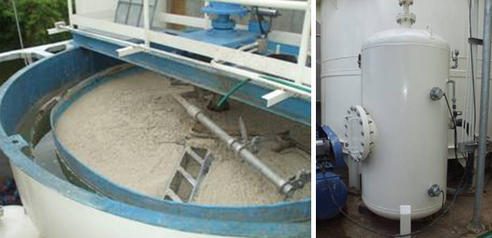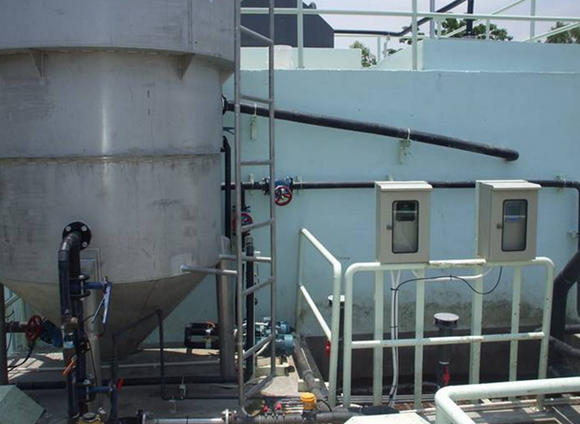Wastewater Treatment
ระบบบำบัดน้ำเสีย ระบบกำจัดไขมัน และน้ำมัน ระบบบำบัดน้ำเสียด้วยวิธีทางเคมี (Chemical Treatment System) ระบบบำบัดน้ำเสียด้วยวิธีทางชีวภาพ (Biological Treatment System)
Dissolved Air Flotation
Dissolved air flotation (DAF) is a useful process for solving problems in separation of solids. DAF consists of attaching fine air bubbles to suspended material, causing a net reduction of specific gravity of the solid particle and thence causing it to float. UTB’s Flotator reactor applies the principle of DAF in a unique manner to achieve high solids capture rate and removal of other contaminants in a compact and low energy installation.
As the Flotator process depends on the size of the bubbles produced to float the solids, the smaller the size, the better the efficiency. The Flotator reactor produces these micronsize bubbles by dissolving air into clean recled effluent from the reactor at high pressures followed by subsequent sudden release to atmospheric pressure. As soon as the pressure is reduced to atmospheric levels, the dissolved air, which is present in excess saturation, is released as extremely fine micron sized bubbles attaching to the solids. The solids/air particles floats up to the top of the reactor from where they are removed by an adjustable scraper.
The process comprises of two units, a Flotator reactor and a pipe flocculator prior to the reactor. The pipe flocculator is designed to thoroughly mix chemicals in the wastewater. Quantity and type of chemical are normally pre-determined by lab jar tests.





